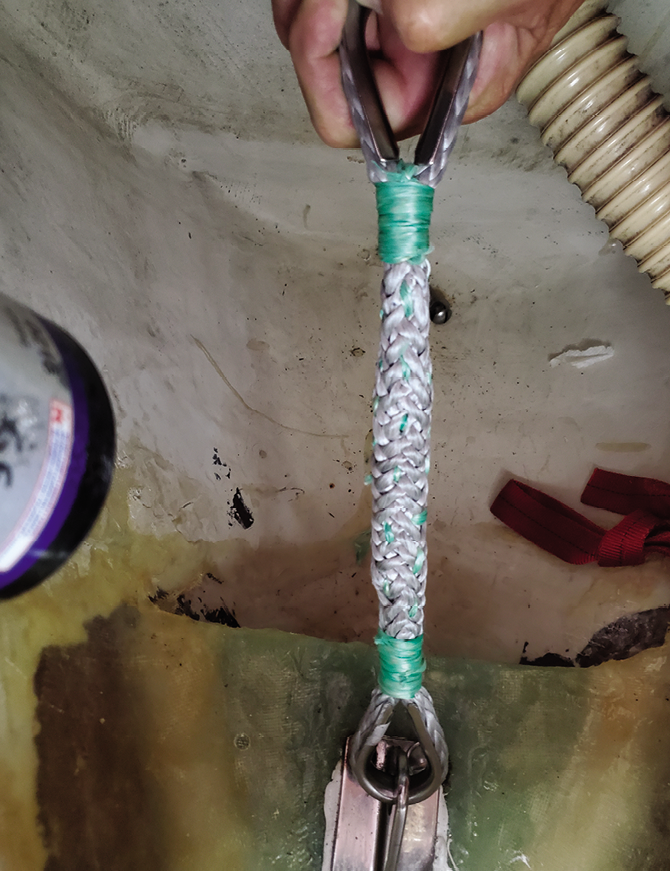Have you ever experimented with, or tested, an Amsteel splice going both directions through the core? The photo below is of 7/16” Amsteel. I needed a short and high strength connection between the hull and the underside of a new inner forestay deck fitting. The section pictured could only be approximately eight inches long, due to other hardware above it.
After the photo below was taken, I lock-stitched the full length with a long strand of Dyneema whipping twine.
I’m wondering about the strength of this splice. As I figure it, the 8-inch bury of both tails equals only about 18 times the diameter of the rope.
Kevin Hendricks
Osa del Mar Catalina 380
Sausalito, CA
WHY NOT TRY LASHING?
Adding an inner forestay is a popular modification for a boat bound offshore. A staysail aids in steering, makes reducing sail quicker and easier, and can serve as a storm jib. Since many decks are not designed to handle the rigging loads, reinforcement measures such as yours are necessary. One option here would be to use a lashing, which would offer plenty of strength, depending on the number of turns.
The recommended bury is 72:1. There has been a good bit of testing proving that buries as short as 45:1 can be full strength, with lock stitching at the eye. Any shorter, and you lose strength because Dyneema is too slippery.
Lock-stitching the full length is not a good solution because it prevents the cover from contracting enough to prevent slippage. We know of one company that makes dog bones that way, and these test to about 50-percent of original strength. We have used them, but only in applications where the strength required was a fraction of that. Overlapping tails, as in your photo, are occasionally done when mounting blocks on short strops, but we haven’t found any rigorous testing. They are typically considered 3 to 4 times weaker than a proper eye splice.
A good solution is a lashing, with strands equal to about 160 percent the required strength. Splice an eye in one end, go round and round, and tie off the tail with at least eight half hitches, with the tail secured with a whipping. The ends can be special lashing terminators for standing rigging (www.colligo.com), a solid low friction rings, or a sailmaker’s thimbles for mating with a rope eye, but not cable thimbles (as you have), because they will distort under load and can cut the line with their sharp ends (see “Re-evaluating Eye-Splice Thimbles,” PS May 2018).
A lashing may seem weaker than spliced rope, but industrial slings that lift hundreds of tons are made with continuous small cords going around many times, inside a cover. Harken makes these for sailors as Loups (a lashing inside a cover). Big boats have masts held up with shroud lashings. In short, lashing can be plenty strong.
You’ll find a more detailed description of lashing technique, and explanation of how they work and where they are used in the June 2019 issue of Practical Sailor “Lashing for Strength,” PS June 2019). You might also like a recent article on making your own high strength shackles using Dyneema (see “Testing the DIY Dog Bone Shackle, PS October 2021).





































